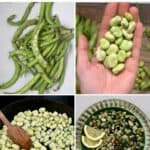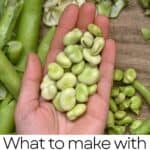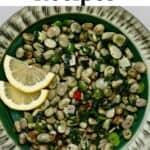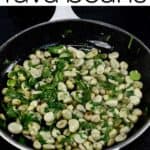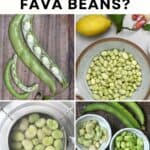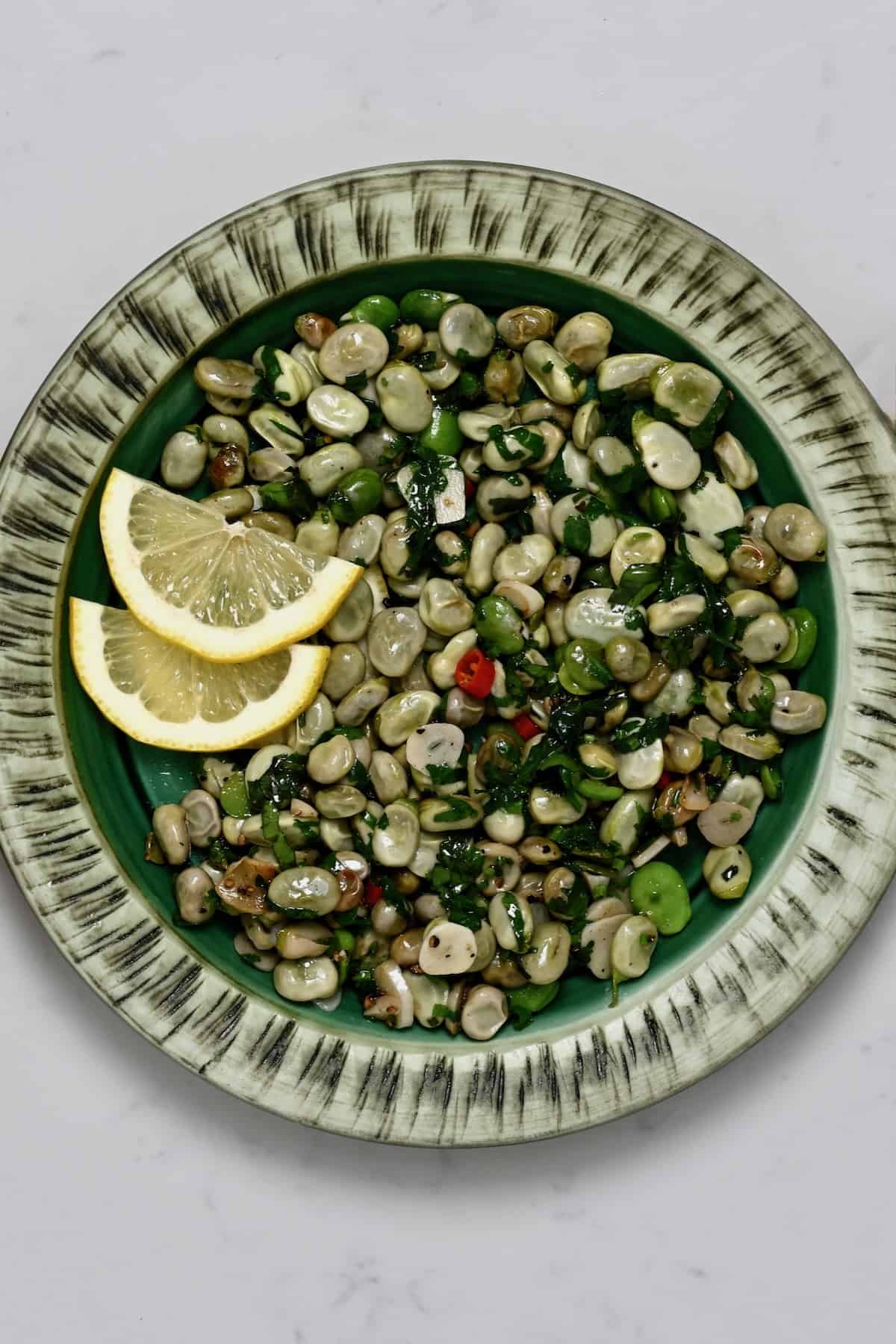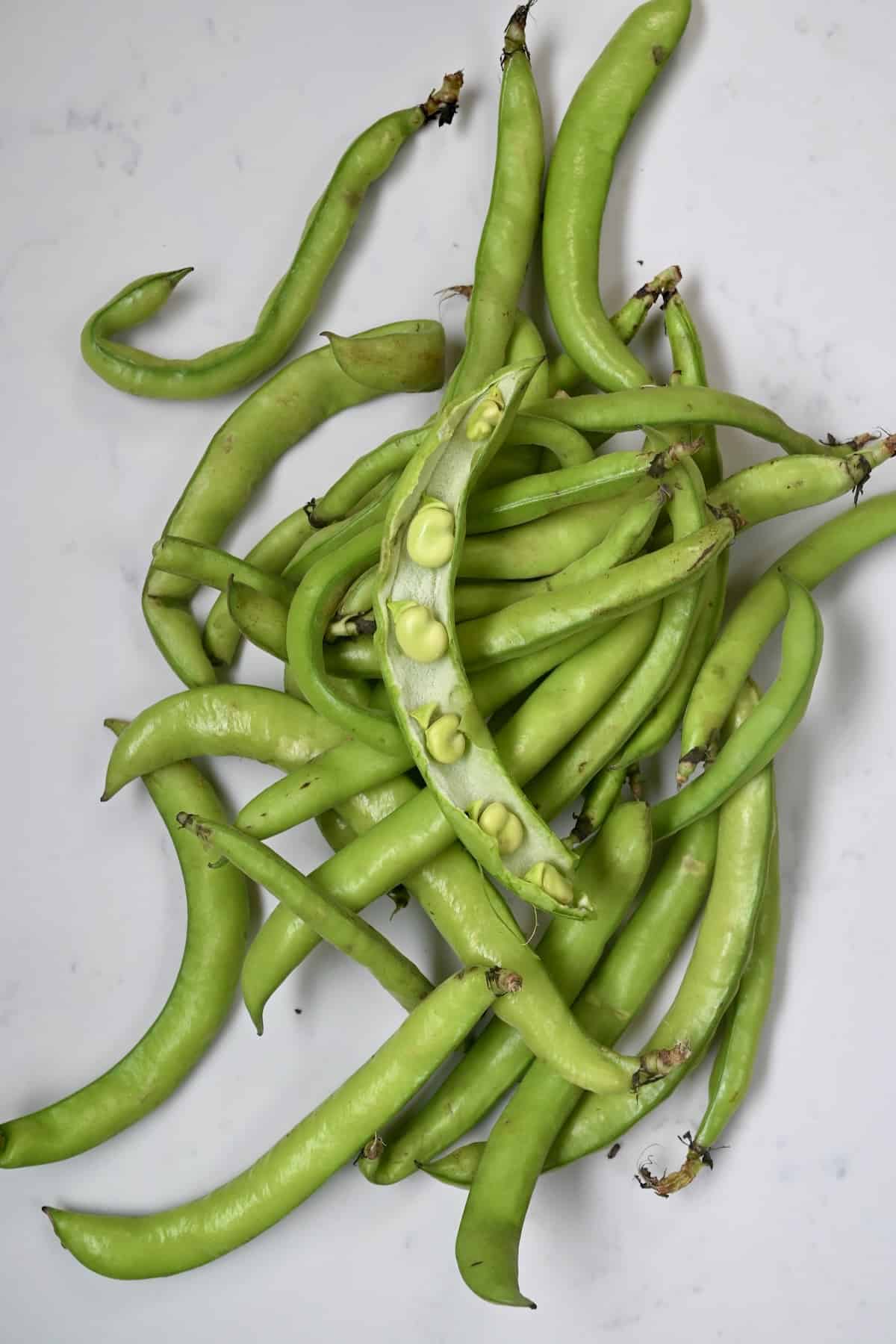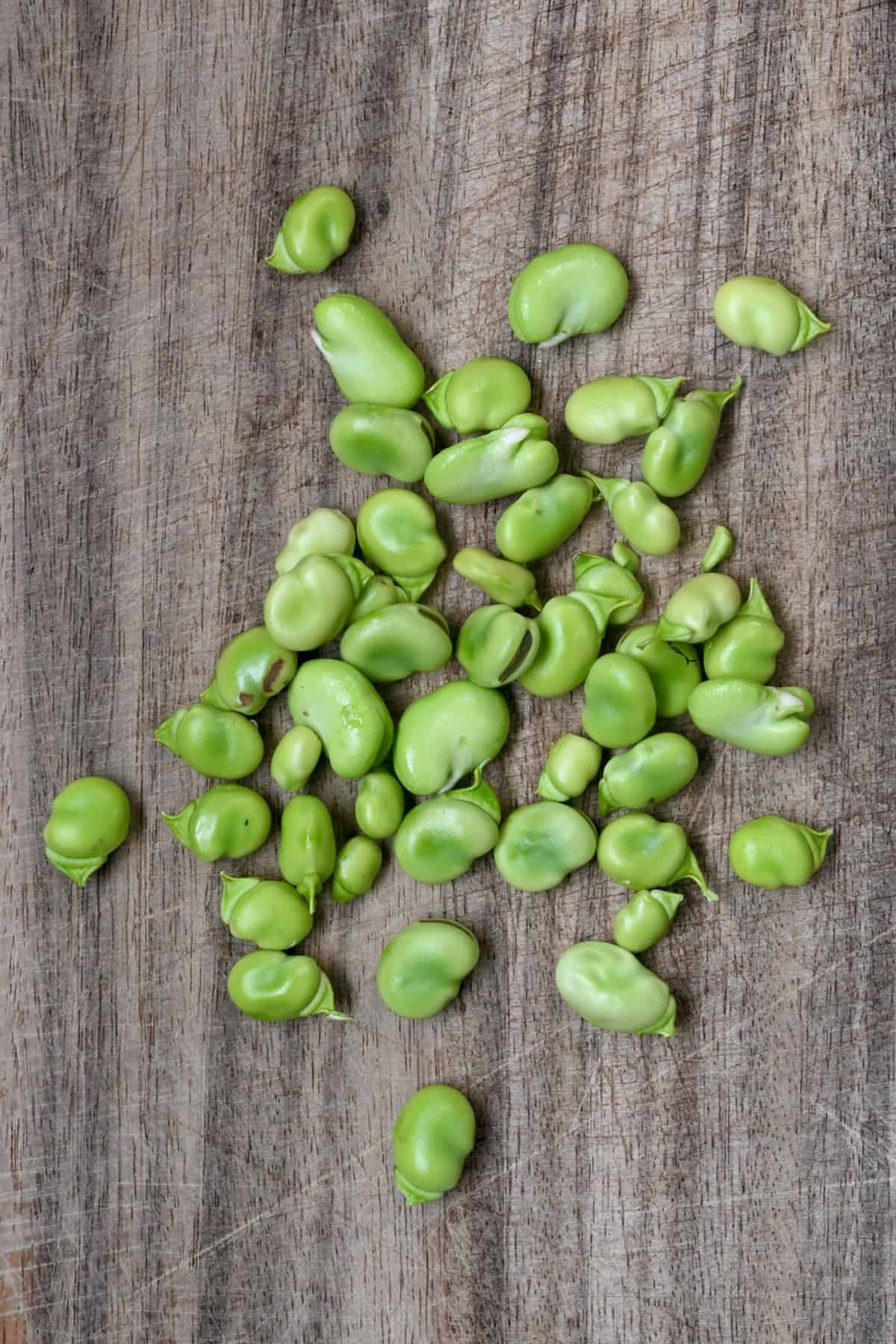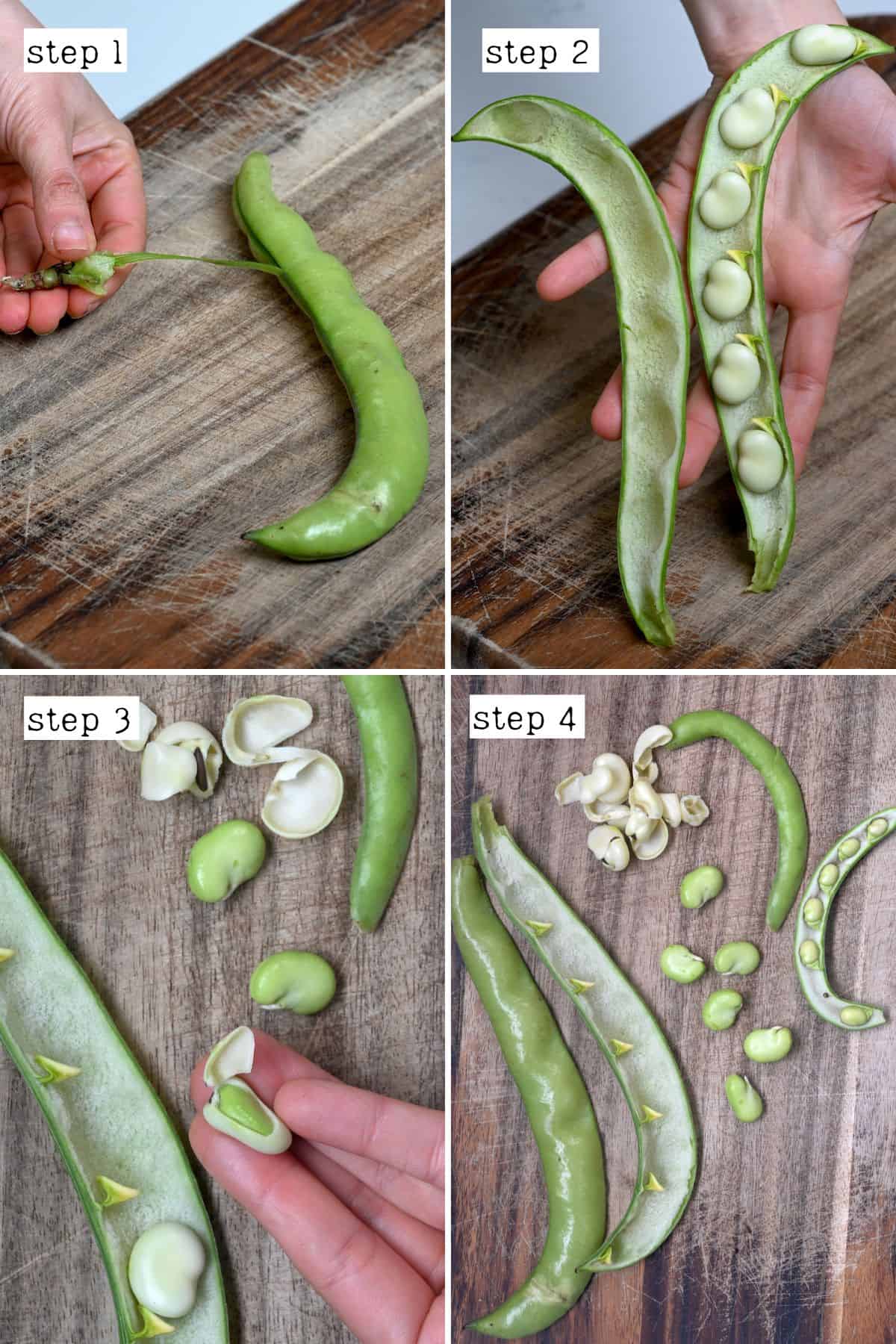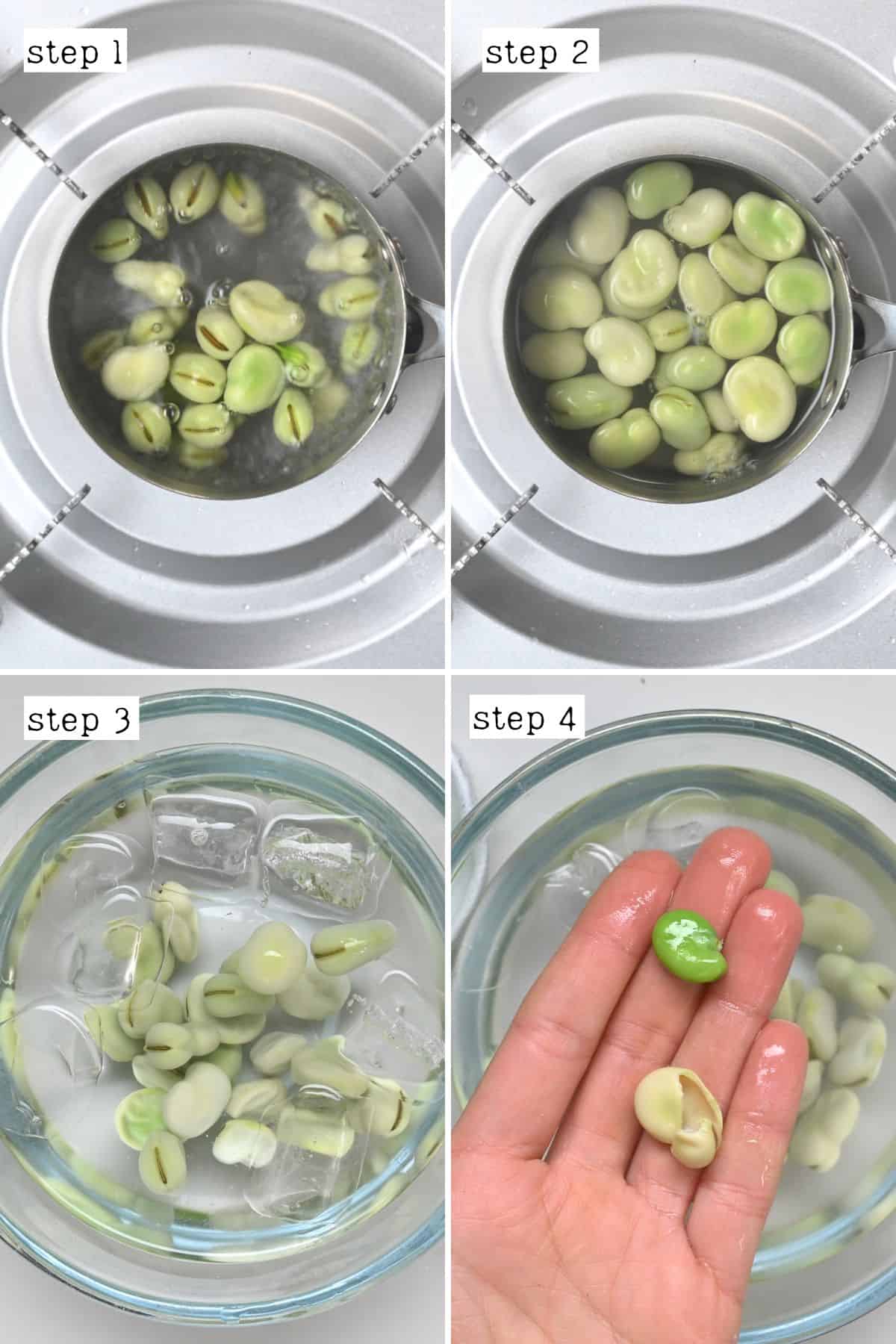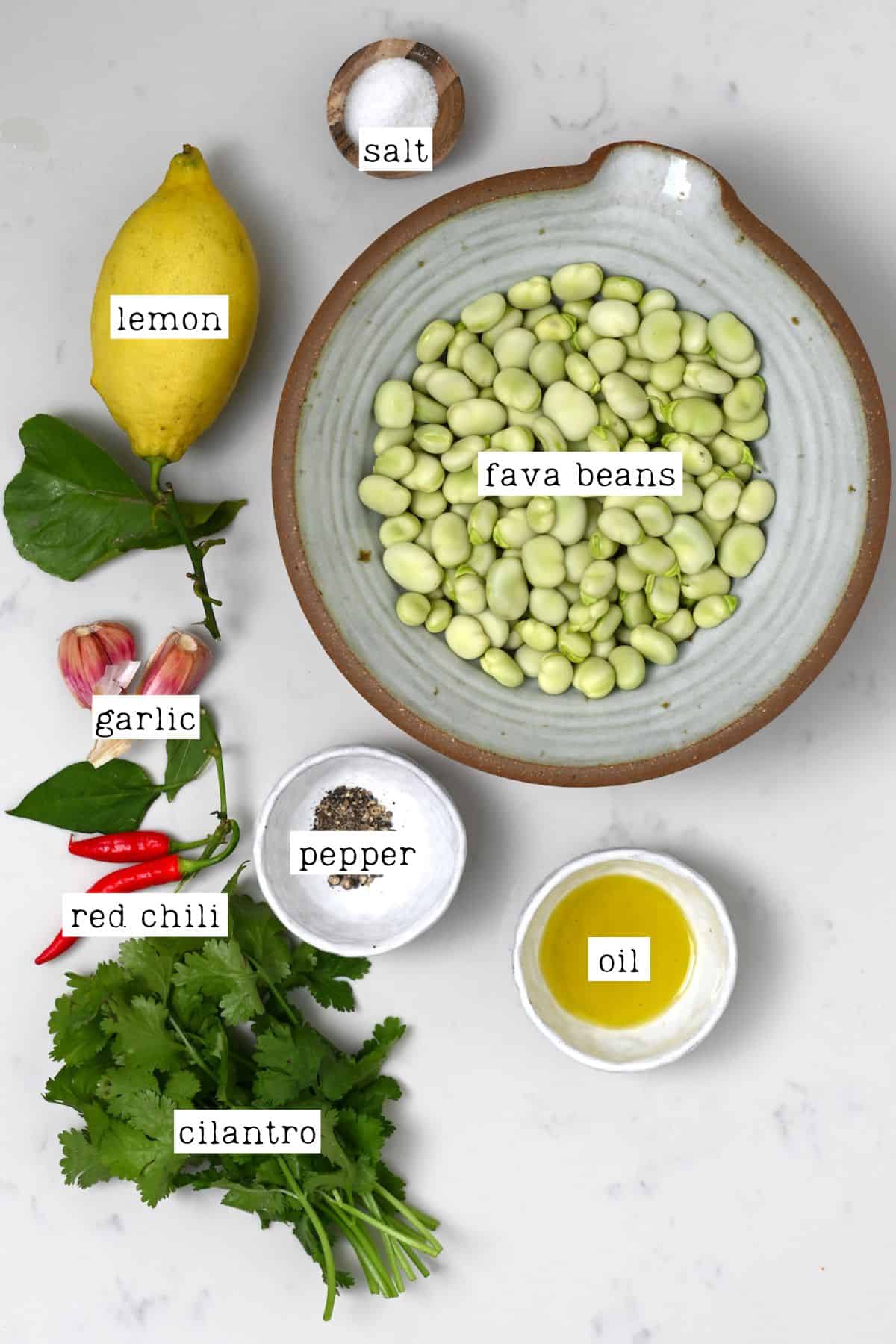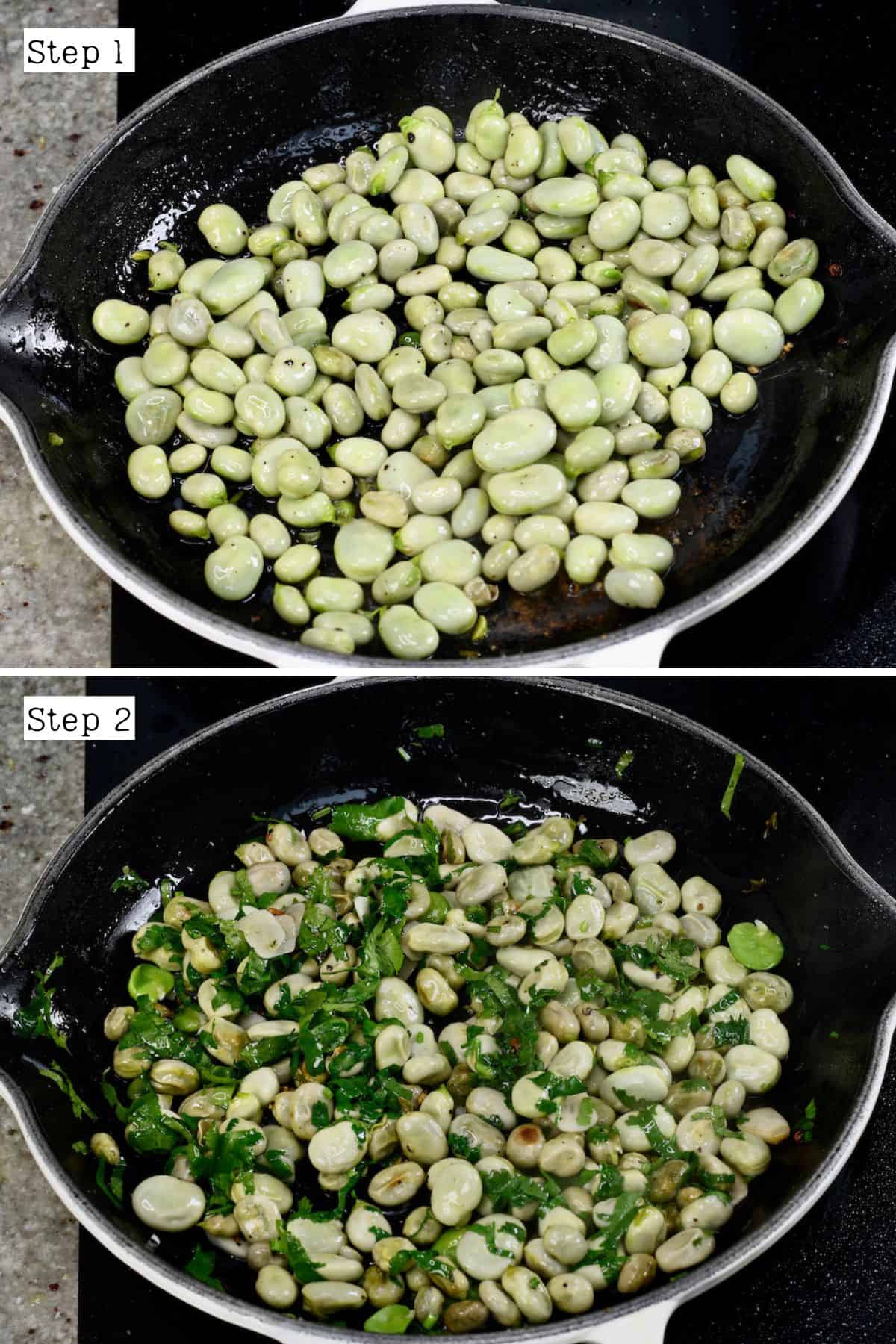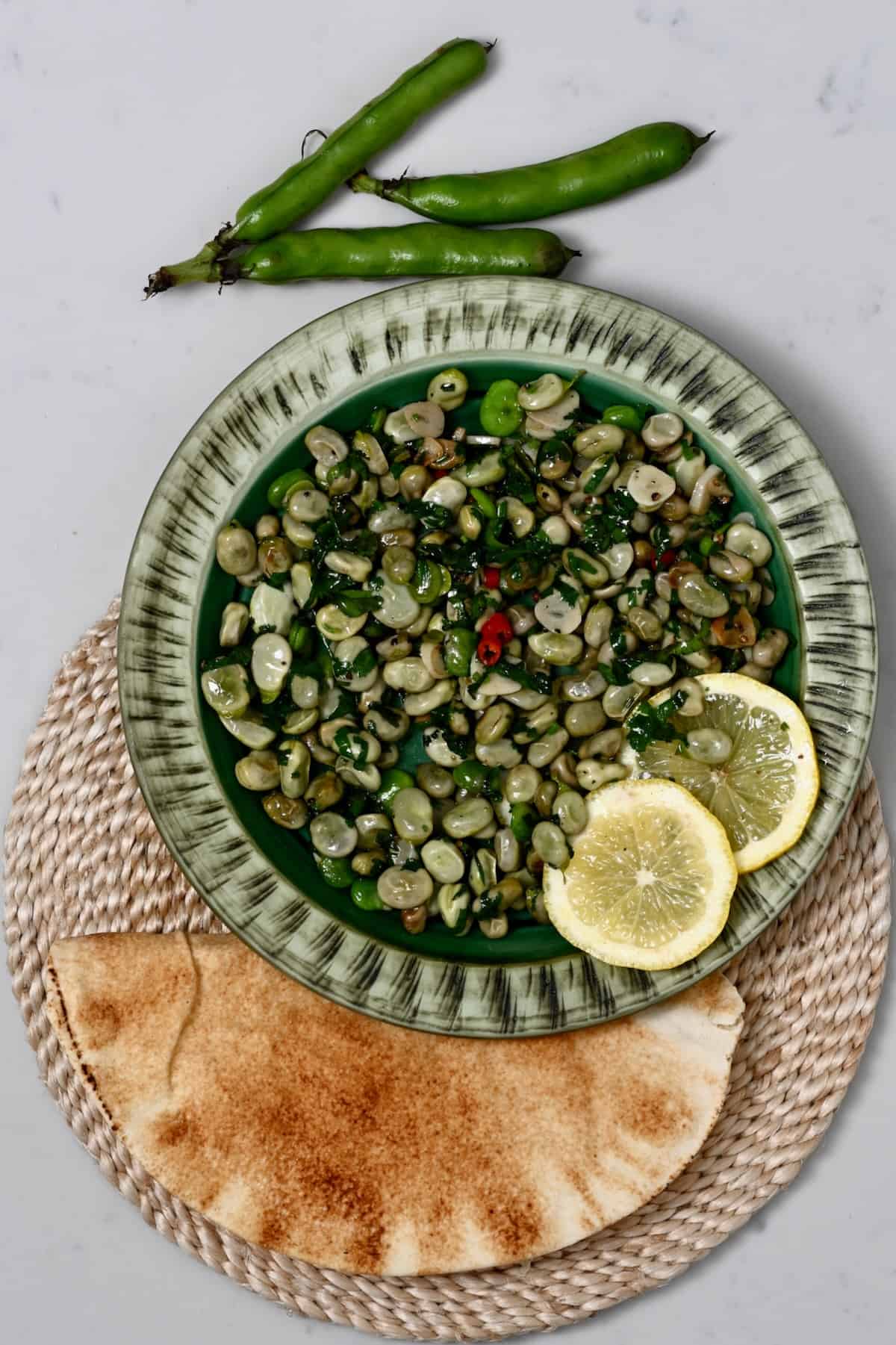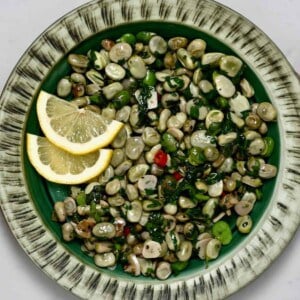It’s officially spring, bringing with it delicious in-season produce like rhubarb, artichoke, spring radishes, and fava beans. Unfortunately, it’s easy to ignore ingredients you aren’t familiar with when visiting the local grocery store and farmer’s markets. However, keep reading for a simple step-by-step guide on how to cook fava beans: including shelling, then sautéing, boiling, and steaming them. Once you know how to prepare them, fresh fava beans are a versatile and delicious addition to your kitchen. This includes adding them to salads, risottos, soups, and stews, mashing them to add to homemade guacamole, the best homemade hummus, or turn into a dip of their own. You can also fold them into rice, quinoa, bulgur, and farro, enjoy them with mashed potatoes, serve them over easy flatbread or crusty bread… the list goes on and on.
What are fava beans?
Fava beans (aka Vicia Faba, also known as broad beans and faba beans) come from a flowering plant in the pea and bean family and have origins dating as far back as 6000 BCE. However, these days, they are a popular ingredient across the globe, including Africa, the Middle East, Europe, and South America. Like several pod beans, they can be eaten at several stages of their growth. For example, when very young, the entire pod can be eaten. When young, the bean and outer coat are edible. When more mature, the pod and outer coat are too fibrous and unpleasant to eat but the beans within can be enjoyed raw or cooked. For the sake of this post, I’m focusing on the mature pods, which have a peak season in springtime (though they are sold as dried beans year-round). They have a creamy, earthy, nutty, slightly buttery flavor (sometimes with a hint of bitterness) with a creamy texture once cooked.
How to shell fava beans
To prepare fava beans, the first step usually entails removing the beans from their pods. They are then blanched, if needed, to remove the outer seed coat. It’s important to note that those with the genetic disorder G6PD should avoid fava beans, as consuming them may cause anemia.
First, snap off the pod’s tip and pull the string down, like a zipper, to open the pod. Remove the beans from within. There are usually 4-5 per pod.
If they’re soft, you may be able to peel the layer from around the beans by hand. Otherwise, transfer them to a pot of boiling water and parboil/blanch for 30 seconds. Then use a slotted spoon to transfer them to a bowl of ice water (to halt the cooking). Once cool, drain the beans and then remove the skin. To do so, pinch it between two fingers, and it should slip off easily.
Note that 2 lbs of fava bean pods will yield about 1 cup of shelled large beans. For the younger beans, it’s closer to a 4:1 yield (4 lbs to one cup). At this point, the beans are already edible and will work well within salads or as a snack, to make authentic falafel, added to homemade basil pesto, etc. Alternatively, go on to cook them.
Can you eat fava beans skin
Though the skin is technically edible, the size and age of the beans make a difference. Very young beans will have a tender, more easily digestible peel. As they age, it becomes more fibrous and even slightly bitter. So, generally, the taste and texture of the beans are improved by removing the outer skins.
Sautéed
Enjoy a flavorful sautéed fresh fava beans recipe often found as part of a traditional Lebanese mezze. It’s simple to prepare, ready in under 15 minutes, and loaded with flavor. For really simple sautéed fava beans, you could use butter, salt & pepper, and some fresh herbs to garnish (mint, dill, parsley, etc.) and sauté until tender for a delicious side dish.
How to prepare dried fava beans
For every 1lb (0.45kg) of beans, use 10 cups (2.4l) of water. Leave to soak for 8 hours or overnight (up to 24 hours) OR do a “quick soak’ by boiling them for 3 minutes, then leave them to soak in hot water for an hour. Once soaked, remove the peels by squeezing them between your thumb and finger. Then either use them within recipes like falafel OR boil the beans in salted water until tender, checking on them every 10 minutes until ready (this can take up to 45 minutes).
More ingredient guides
How to Cook Fennel What is Arugula and what to do with arugula How to Cook Okra Homemade Ghee Types of Radishes How to Eat Radish greens How to Cook Asparagus
If you try any of these methods for how to cook fava beans, let me know how it goes in the comments below. I’d appreciate a recipe card rating and would love to see your recipe recreations – tag me on Instagram @Alphafoodie!
